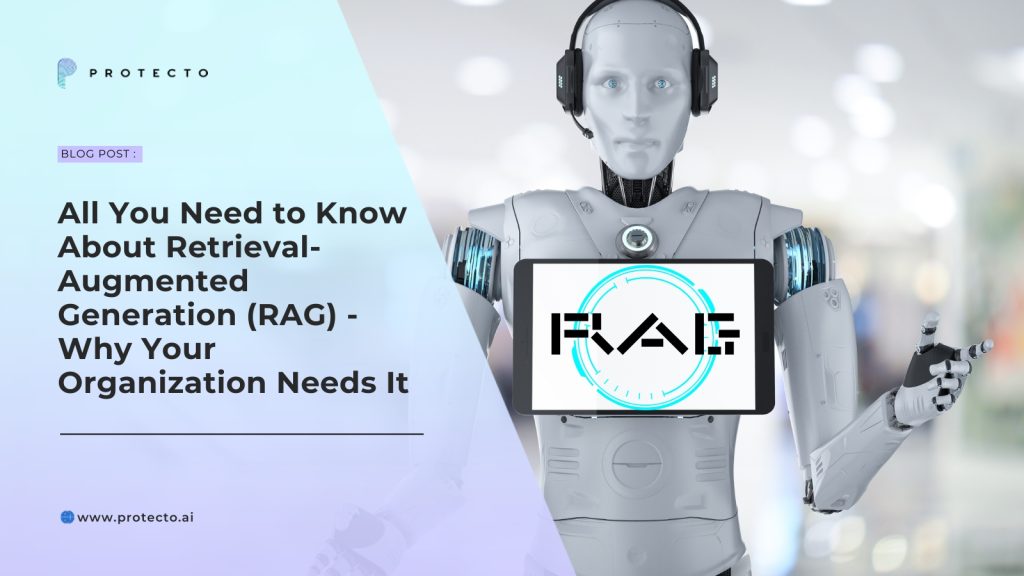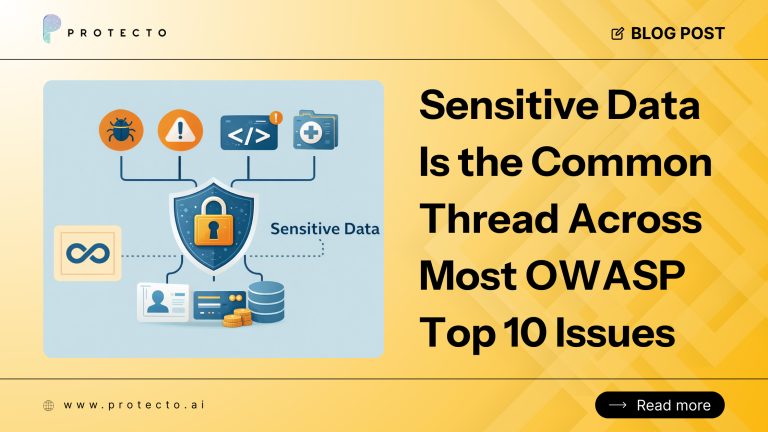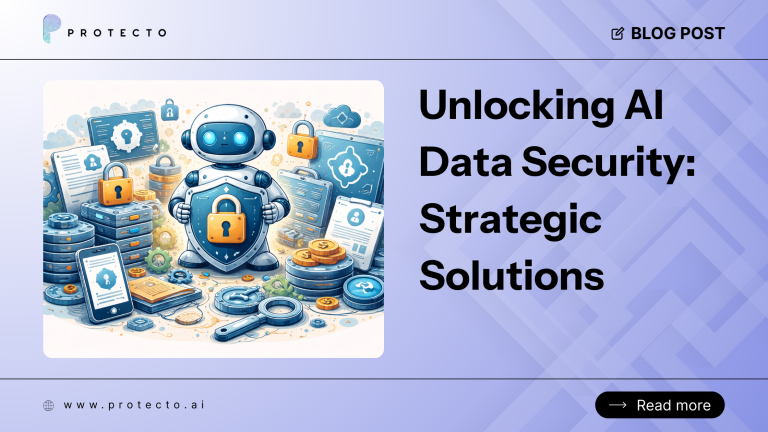Imagine accessing a giant repository of knowledge, extracting the most relevant information in response to your specific needs, and then using that information to generate intelligent, factual responses – that’s the power of Retrieval-Augmented Generation (RAG). This innovative technology is taking the world of Artificial Intelligence (AI) by storm, and for good reason. Let’s delve into what RAG is, why it counts, and how it can transform your organization.
Understanding RAG: More Than Just Words
At its core, RAG combines two critical components: a retriever and a generator. The retriever acts like a tireless research assistant, scouring vast pools of data (documents, articles, databases) to find the most relevant information based on your input. Think of it as a highly sophisticated search engine on steroids.
Once the retriever gathers the relevant information, the generator steps in. This is where the magic happens. The generator, powered by large language models (LLMs), uses the retrieved data to create human-quality text, translating the knowledge into meaningful responses, summaries, explanations, or creative text formats.
So, what sets RAG apart from traditional LLMs? Unlike their standalone counterparts, RAG models don’t rely solely on their internal databases of text and code. They actively seek out fresh, up-to-date information, ensuring factual accuracy and grounding their responses in reality. This makes them ideal for tasks requiring factual grounding, like answering complex questions, generating reports, or summarizing research findings.
Why Your Organization Needs RAG: A Game-Changer in Disguise
In today’s data-driven world, organizations struggle to leverage the vast knowledge at their fingertips. RAG bridges this gap, offering a multitude of benefits:
- Increased Accuracy: No more relying on potentially outdated or inaccurate information within LLMs. RAG ensures your outputs are grounded in facts and the latest knowledge.
- Factual Grounding: Trust is paramount. RAG’s access to external knowledge sources builds trust by providing verifiable claims and transparently citing sources.
- Personalization: Tailored responses tailored to specific needs and contexts. RAG considers individual preferences and situations, leading to more relevant and impactful outputs.
- Knowledge Base Integration: Seamlessly integrate your internal knowledge base with RAG, unlocking the full potential of your organization’s collective knowledge.
From Customer Service to Research: A World of Possibilities
The applications of RAG are nearly limitless, spanning across various industries:
- Customer Service: Imagine chatbots that answer questions accurately and offer personalized solutions powered by real-time data and knowledge base integration.
- Marketing: Generate targeted content and recommendations that resonate with specific audiences, boosting engagement and conversion rates.
- Research: Summarize complex research papers, extract critical insights from data, and accelerate the research process.
- Content Creation: Generate personalized reports, news articles, or marketing copy based on specific requirements and brand voice.
- Legal: Analyze contracts, identify potential risks, and summarize complex legal documents accurately.
These are just a few examples, and the possibilities constantly expand as RAG technology evolves.
Deep Dive into RAG Technology
Now that we’ve explored the “what” and “why” of RAG, let’s dive into the “how” – the intricate workings behind this powerful technology.
The Power Duo: Retriever and Generator
Imagine a detective and a writer working in tandem. Like a skilled detective, the retriever scours data sources for relevant information based on your query. Like a talented writer, the generator takes that information and weaves it into a coherent, human-quality response.
The Retriever: Unearthing the Nuggets of Knowledge
There are several ways retrievers can approach their task:
- Search engine-like: Familiar search algorithms crawl and index vast data repositories, retrieving relevant documents based on keyword matching.
- Document embedding: More advanced techniques analyze the semantic meaning of documents, understanding their context and relationships, leading to more nuanced retrieval.
But finding relevant information isn’t enough. The retriever also needs to select the most valuable pieces. This involves techniques like:
- Ranking: Algorithms assess the relevance of retrieved documents based on factors like keywords, document structure, and their similarity to other relevant documents.
- Passage ranking: Specific passages containing the most pertinent information are identified and prioritized within relevant documents.
The Generator: Transforming Knowledge into Text
Once the retriever delivers its bounty, the generator takes center stage. Here’s how it uses the retrieved information:
- Contextual understanding: The generator analyzes the retrieved information and your original query to understand the context and generate relevant and coherent responses.
- LLM power: Most RAG models leverage the power of LLMs, neural networks trained on massive amounts of text data. These LLMs can generate text that mimics human language style and structure.
- Information integration: The retrieved information isn’t simply regurgitated. The generator skillfully integrates it with its knowledge base, producing original and informative responses.
Controlling and Refining the Output
While the retriever and generator work autonomously, humans can guide their behavior:
- Prompt engineering: You can steer the generator towards specific responses or styles by carefully crafting the input prompt.
- Fine-tuning: RAG models can be fine-tuned on specific tasks or datasets, improving their accuracy and tailoring them to your organization’s needs.
Training and Deployment: Unlocking the Potential
Training RAG models requires specialized expertise and resources:
- Data: High-quality training data is crucial for the retriever and the generator. This includes the data you want the model to access and labeled examples of desired outputs.
- Computational resources: Training these complex models requires significant computing power, often available through cloud platforms.
Once trained, deployment involves integrating RAG into your existing systems and workflows. This can be done through APIs or by building custom applications.
Best Practices for Success:
- Start small: Commence with a pilot project to test the waters and identify potential challenges.
- Focus on clear goals: Define what you want to achieve with RAG and tailor your model and data accordingly.
- Monitor and evaluate: Continuously monitor RAG’s performance and refine it based on feedback and results.
- Prioritize security and privacy: Implement robust data security measures and ensure responsible use of data.
Beyond the Basics: Advanced Strategies and Considerations
While the retriever-generator duo forms the core of RAG, advanced techniques further enhance its capabilities:
- Multimodal retrievers: Integrate information from various sources, such as images, audio, and video, offering a richer context for the generator.
- Reinforcement learning: Continuously improve the model’s performance by rewarding desired outputs and penalizing undesirable ones.
- Explainable AI: Develop techniques to understand how the model arrives at its outputs, improving transparency and trust.
Impact on Organizations: A New Era of AI Integration
RAG adoption holds the potential to:
- Boost productivity and efficiency: Automate tasks like content creation, report generation, and data analysis.
- Enhance customer experience: Offer personalized interactions and accurate information, leading to increased satisfaction.
- Accelerate innovation: Drive research and development by extracting insights from vast data.
- Transform workflows: Integrate AI seamlessly into various business processes, leading to a more intelligent and data-driven organization.
Embracing the Potential of RAG
RAG presents a transformative opportunity for organizations to leverage the power of AI responsibly and ethically. By understanding its inner workings, considering the challenges and opportunities, and prioritizing responsible development, organizations can harness the power of RAG to unlock new levels of efficiency, innovation, and customer satisfaction.
The Future of RAG and Its Impact on Organizations
RAG technology constantly evolves, pushing the boundaries of what’s possible with AI-powered language generation. Let’s explore these exciting advancements and their potential impact on organizations and society.
Leaping Forward: Advancements in RAG Technology
- Zero-shot learning: RAG models that can seamlessly adapt to new situations and tasks without additional training data, unlocking even greater flexibility.
- Generative pre-training: LLMs with even more advanced capabilities generate text indistinguishable from human-written content and excel at diverse creative tasks.
- Explainable and interpretable RAG: Unprecedented transparency into how models arrive at their outputs, fostering trust and enabling human oversight.
- Multimodal integration: Seamlessly blending data from various sources – text, audio, images, video – leading to richer and more nuanced understanding and outputs.
These advancements promise to revolutionize how organizations leverage RAG:
- Hyper-personalized experiences: RAG models will accurately tailor outputs to individual needs and preferences, leading to highly personalized interactions and content.
- Automation redefined: Repetitive tasks across various sectors will be further automated, freeing human resources for more strategic endeavors.
- Democratization of AI: User-friendly platforms will make RAG more accessible to organizations of all sizes, fostering innovation and closing the AI gap.
A New Era of Work: Opportunities and Challenges
As RAG transforms how we work, several considerations arise:
- Upskilling and reskilling: Ensuring the workforce adapts to new AI-driven workflows will be crucial.
- Ethical considerations: Responsible development and deployment of RAG are essential to mitigate potential biases and ensure fair and equitable applications.
- Human-AI collaboration: Fostering a synergistic relationship between humans and AI to leverage both strengths will be essential for success.
By embracing these advancements responsibly and navigating them thoughtfully, organizations can leverage RAG to achieve greater efficiency, innovation, and success in a rapidly evolving world. As with any AI resource, you must carefully consider data privacy and compliance issues while implementing it to its full potential in your organization. Protecto can help you smooth out the process with its powerful features relating to preserving data privacy.



